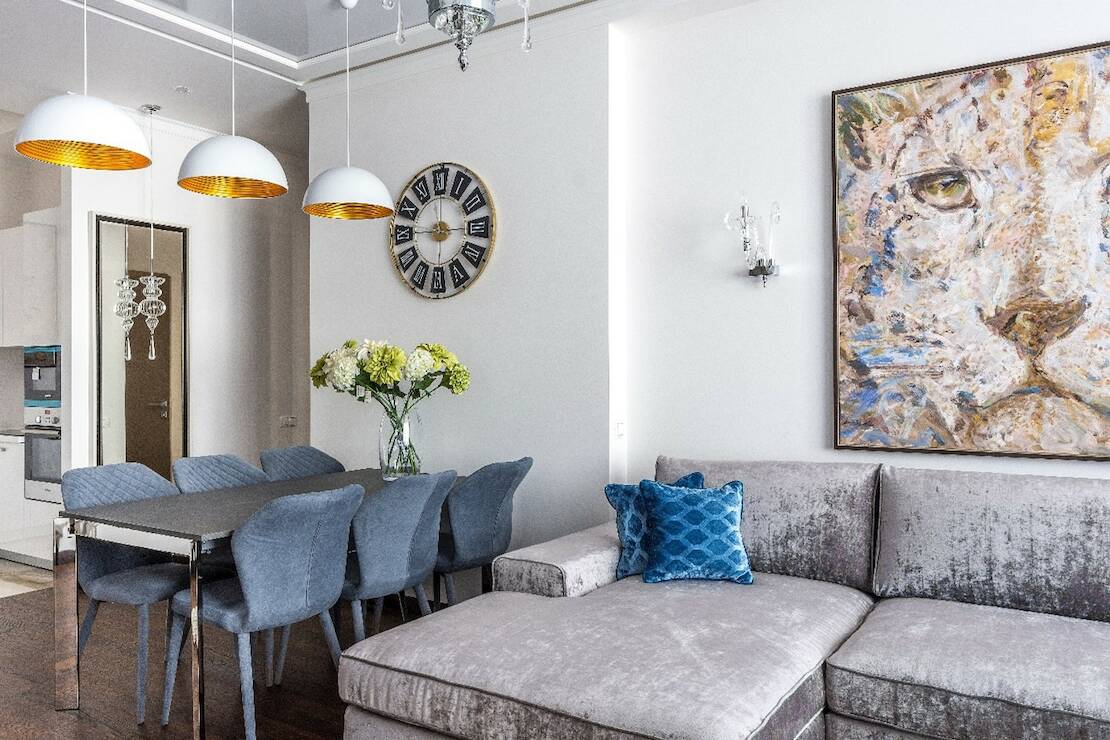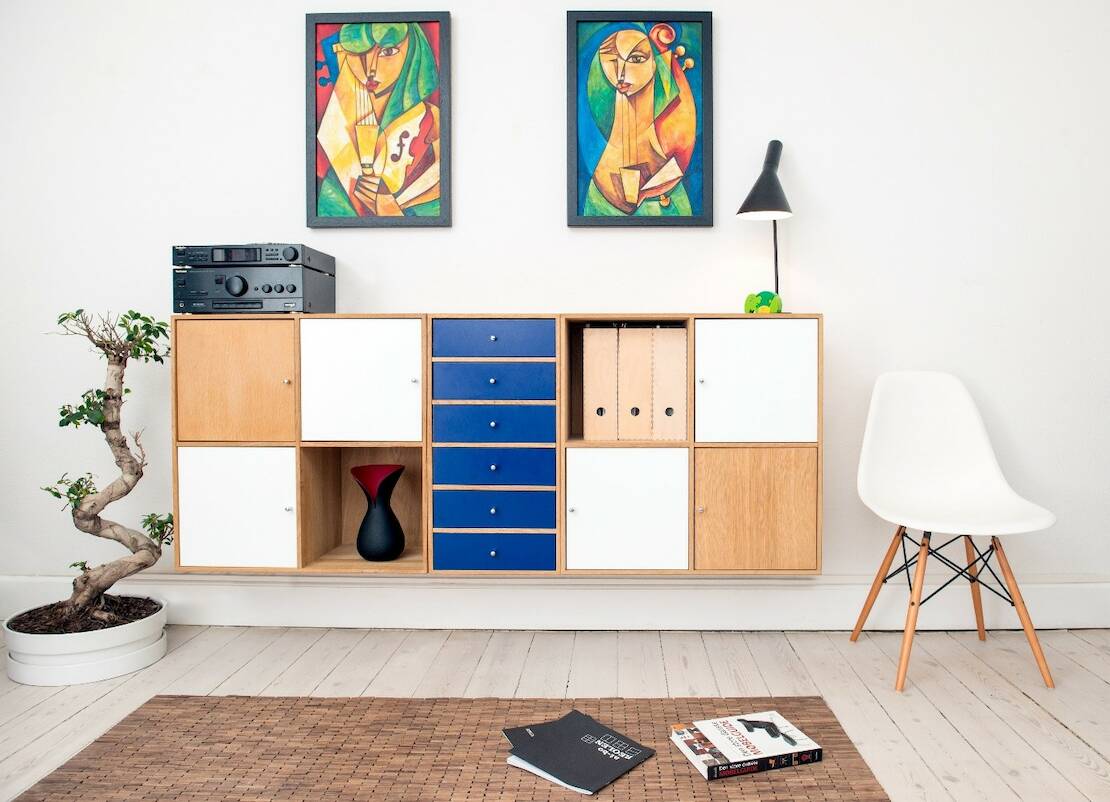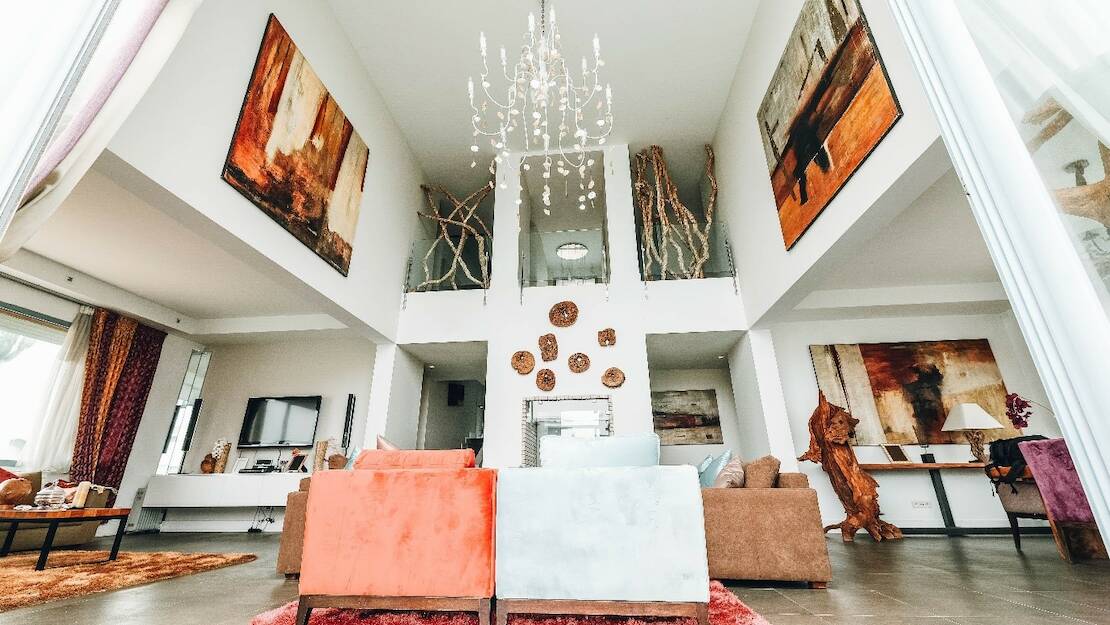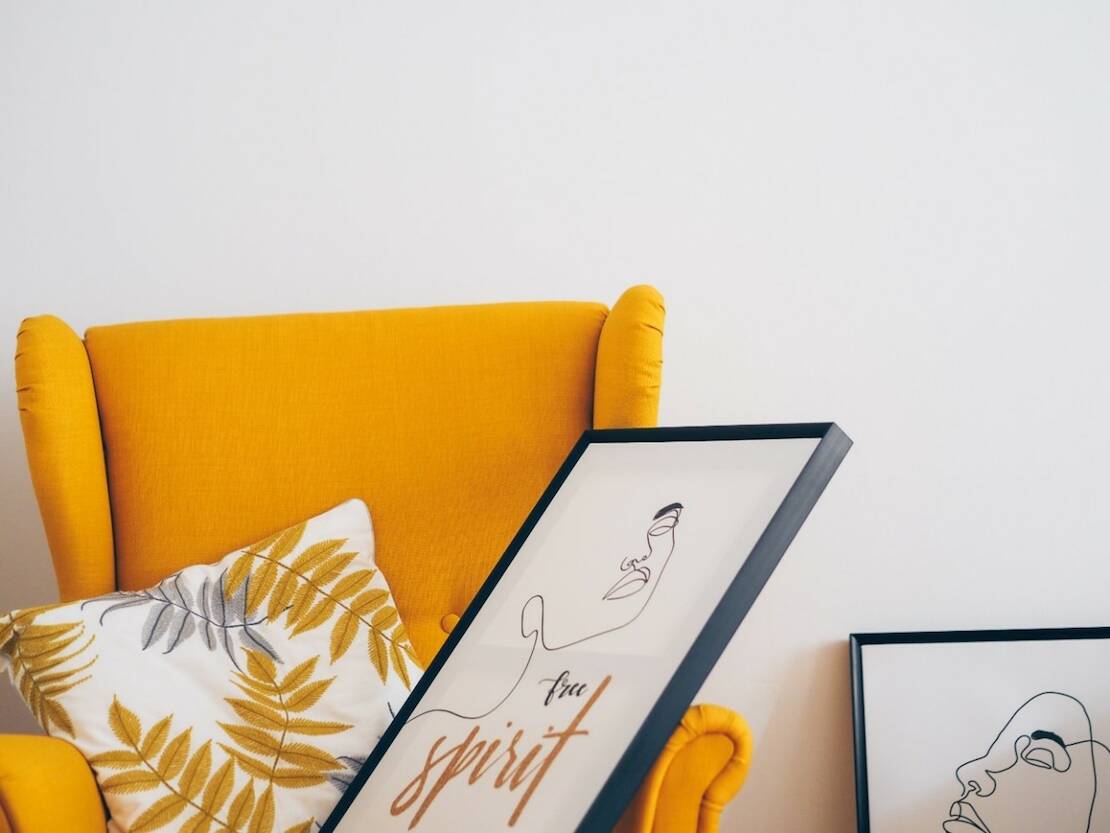- Home
- / Blog
- / Interior Design
Nine Reasons Art Rules Interior Design
07/12/2021
The use of art in the interior design has accelerated these last years. The incorporation of different forms of artistic pieces has led to the development of various mediums suited for the interior décor of different spaces. Whether for restaurants, grand halls, residential units, social spaces, or commercial offices, art now forms an integral part of the décor.

Blue Throw Pillow on Gray Sofa, Вахтбович Максим, 2020, via Pexels
In interior designing, art goes beyond just the use of wall hangings or paintings. It is visible in the playful use of lighting, in the selection of the furniture design, in the organization of the decoration accessories, in the patterns on the tapestry & beddings, in the clever use of color, and in the general ambiance of the space.
The forms of art in the interior design, therefore, range from wall art and murals to 3D art, digital art, printed art, photography, graphic design pieces, typographical art, sculptures and so much more.
Why Art is Important in the Interior Design
Interior designers have found that art plays a crucial role in an interior space. The transformation experienced when a designer adds or switches up a properly selected art piece in a room is undeniable. The following are some of the reasons why you should incorporate art into your interiors:
1. Aesthetic Appeal
First and foremost, art is visually attractive. By simply introducing it into your décor, you are able to add to the aesthetics of the room. Upscale your interior décor by classing it up with an artwork that perfectly complements your design style.

Line art, geometric or typographical art pieces work well with minimalist designs. For modern and contemporary spaces large monochromatic interior design paintings or abstract pieces with a splash of color can do. For vintage décor, classic paintings and antique decoration pieces will seamlessly fit into the design, adding to the charm.
2. The Center of Focus
Art creates a much-needed center of focus in every room. The skillful selection of a statement piece of art, coupled with the right positioning can draw all the attention to the intended part of the room. It, therefore, becomes a focal point. When choosing an interior design artwork, size and positioning play an important role.

A smaller artwork can easily be overlooked. Therefore, selecting an art piece that is large enough to stand out is key. Place your artwork at eye level, conspicuously on a blank wall with no obstructions from the furniture. If you need to hang a collection, distribute them uniformly, with even spacing between them for a better visual balance. Explore different layouts for clusters of artwork with different orientations and sizes.
You can further draw attention to an otherwise modest art piece through the use of art lighting design. Perfect Picture Lights has exceptional art lighting fittings and lamps with sleek finishes to highlight any interior design artwork. Downlighting and backlighting are a great way to make your artwork stand out. For a more dramatic effect, you can also use uplighting, especially for sculptures and three-dimensional pieces.
3. Display of Creativity
Art is a form of self-expression. It converts a plain modular room into an unforgettable, stimulating space. In good interior design, art not only allows you to show your creative side, but it should also inspire creativity when experiencing the space.

Brown, White, and Blue Wooden Board, ATBO, 2016, via Pexels
Express your creativity through the display of your taste in art, the arrangement of the pieces, the skillful color combinations, and even making your own DIY pieces and picture frames.
4. The Inspiration for the Color Palette
In interior design and remodeling, it is sometimes a challenge deciding on the best colors to work with, in your color palette. Why not make that decision with the help of your favorite art piece? Art can not only inspire the color palette used in your décor but also add a pop of color and texture to the interior space. Therefore, you can center your interior design on the art.

Roccabella Montreal, Nathan Van Egmond, 2020, via Unsplash
Art should never be an afterthought that you just select after the entire interior design is complete. It might be a challenge finding that favorite art piece that inspires you but still complements the color palette of your space.
Therefore, go shopping for that statement piece and use its color palette to inspire your décor. Match the colors featured in your art piece to your décor through accent pieces such as furniture, rugs, curtains, throw pillows, or even by repainting your walls.
While it may be an artistic choice, integrating art pieces with completely contrasting colors from the color palette of the room may cause visual noise and clutter. Therefore, only use them in moderation. When in doubt, you can always opt for monochromatic art pieces.
5. Sets the Mood
Different types of art rouse different kinds of emotions. From the selection of the medium to the brush strokes and the choice of color, the artist sets the mood of the painting. Similarly, the right selection of art can set the intended mood in a space.
The selection of art has an emotional connection to the interior space. Subtle art with pastel or dull colors can create an intimate mood in a room. On the other hand, bold art with bursts of bright color is energizing and can effectively boost creativity in a workspace.

6. Preservation of Memories
Incorporation of art in the interior design can play a great role in the mental state we experience in the room. Relive all your great moments by selecting art pieces that personally speak to you or bear some intrinsic value to you.
Think about the sense of familiarity you feel when walking into a room with properly edited, printed, and framed photos of your loved ones. What about that statement canvas painting that your best friend gifted you? The art piece that you collected on your vacation with your friends and family? Art preserves such memories. It creates that feeling of fondness in the room, making you feel welcomed in the space.
7. Unifies and Completes the Décor
Good design features art pieces in its décor. That final layer of art automatically makes the room look more complete and well thought through. Art ties together all the elements in the room to create unity of design.

By borrowing the different colors and textures that appear in your artwork and integrating them into your décor, the design looks more coordinated. It shows meticulousness by the interior designer in the design process, creating that finished look.
8. Identity and Uniqueness
Art allows you to put a little bit of yourself into the room. It allows you to make the space more personalized. Companies and organizations use art for branding to communicate their guiding principles and philosophies.

Motivational murals, wall art, and typographical art pieces can creatively convey the intended message to all the occupants of the space. Add uniqueness and character to the room by including a piece of art that reflects your personal style. Whether subtle or bold, minimalist or extremist, monochromatic, or with bursts of color, let your art build to your identity and brand.
9. Blend with the Surroundings
Art is a great way to blend into the landscape or culture of the environs. Add an art piece with greens to complement a green landscape or cultural pieces that reflect the history or customs of the region.

Photo of Painting Hanging on Wall, Moto Moto, 2020, via Pexels
Depending on the location of the building, the fitting piece of art can help it to effortlessly blend in. The urban landscapes, the countryside, or tropical areas all have artworks that are best suited for them, so that the art is not entirely intrusive.

Transforming Space
Art plays a highly significant role in interior architecture. It transforms a space into what we want it to convey. Fill up that blank wall in your space with captivating art pieces and exceptional picture frames for a finished look. Display it conspicuously and allow it to draw the attention it deserves.
Explore different media and textures to build up your collection. While some outstanding classical pieces and valuable artworks are sufficient on their own, some pieces work better in a cluster, paired up with others.
The interior design profession has grown over the years, with international building codes set in place to offer guidelines in the interior design sector. Every art institute and artist similarly appreciates the importance of interior design in applied art.
For instance, according to an article by Independent, several interior design brands now collaborate with artists to produce artworks that perfectly supplement their collections of furniture and accessories.

To sharpen your interior design skills, and to learn more about art for interior designers, you can sign up for an interior design course with some of the leading institutions in the world. Start by checking up the list of interior design schools compiled by Arch20.
_________________________________________________________________________________________________________
 Winny Okoth is a practicing Construction Project Manager and Interior Designer. She is also currently pursuing her Master’s Degree in Construction Project Management. Winny Okoth has a great passion for every form of design and has the mastery of principles of design, as well as 3D visualizations skills for architectural and interior design renders.
Winny Okoth is a practicing Construction Project Manager and Interior Designer. She is also currently pursuing her Master’s Degree in Construction Project Management. Winny Okoth has a great passion for every form of design and has the mastery of principles of design, as well as 3D visualizations skills for architectural and interior design renders.


